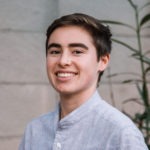Why did Oakland’s Measure QQ fare so much better than other youth vote propositions in California?

Members of Oakland Kids First meet with Council member Rebecca Kaplan to discuss Measure QQ. Photo courtesy of Oakland Kids First
November 16, 2020
Oakland’s Measure QQ, which allows 16-year-olds to vote in school board elections, became the sole youth vote measure in California to pass in this election, with over 67% of the vote.
San Francisco’s Proposition G—which would have let 16-year-olds vote in all city elections—is projected to fail by a margin of less than two percentage points, as of Friday. California Prop. 18—which would have granted the right to vote to 17-year-olds who would turn 18 by the general election—failed by about 11 points.
The most common reason cited for opposition to youth vote measures is “adultism,” or a bias against young people, according to Kei Kawashima-Ginsberg, director of the Center for Information & Research on Civic Learning and Engagement at Tufts University.
These measures are nestled within a national arena that saw an eight-point increase in voter turnout from 2016 among eligible 18- to 29-year-olds.
But why did Oakland’s measure perform so much better than its other California counterparts?
For 17-year-old Oakland Tech senior Malia Liao, culture played a big role.
“This is Oakland, and Oakland is more open to recognize student voice and student power,” Liao said, “and how we deserve a voice in the institution that really deeply impacts us on a daily level.”
The Oakland school board is responsible for making education policies, adopting a budget, working with the superintendent and listening to the community. In short, it’s responsible for giving OUSD schools the resources to provide a quality education. The board has seven voting members—one representing each district—plus two non-voting student reps, and serves a public and charter school population of nearly 50,000 students. It also has a budget of almost $800 million.
Liao is an organizer with Oakland Kids First (OKF), a group founded in 1995 to institutionalize more resources and opportunities for Oakland students. OKF’s executive director Lukas Brekke-Miesner—who is 34—was relieved by the overwhelming adult support for Measure QQ.
“Adults have to stand with youth to give them that power, and so that could have gone either way,” Brekke-Miesner said, “and we saw that across the Bay Area and across the state.”
On the other side of the bay, San Francisco youth believed their city would reward their proven leadership—in movements for racial justice, climate justice, etc.—by voting to let them have a voice in all local elections, not just school board races, Brekke-Miesner said. Although that measure fell just short, more than 200,000 adults voted in favor.
Arev Walker, Berkeley High School student and organizer for the city’s Vote 16 USA campaign, thinks Oakland’s narrow focus played a big role in its success.

Photo courtesy of Oakland Kids First
“While I actually believe that 16- and 17-year-olds should be able to vote in local elections nationwide,” Walker said, “I think it’s a lot harder to convince people of that than it is to say, this is a school board. They make decisions about students’ lives.”
And Walker is no stranger to the premise of Oakland’s youth vote measure. In 2016, Berkeley residents voted to pass Measure Y1, which was supposed to give 16-year-olds the right to vote for school board candidates. However, the measure’s language lacked a clear implementation process, and four years later, it still hasn’t taken effect.
Berkeley and Oakland youth organizers have been working together to make sure Measure QQ doesn’t meet the same fate and to push for the implementation of Berkeley’s measure.
OKF executive director Brekke-Miesner emphasized that Measure QQ won’t just impact teenagers but will increase civic engagement in their families, too.
“When young folks vote, their parents are then more likely to vote as well,” he said. “We looked at the data and the majority of OUSD students live in Districts 5, 6 and 7, which are in East Oakland. Well, that’s also where voter turnout is the lowest. So this is also a way to invigorate voter turnout in areas where it’s low and increase participation in democracy.”
The data agrees. In the Oakland City Council race, the District 1 candidate with the least number of votes—Tri Ngo—won 80% as many votes as the winning candidate in District 7—Treva Reid. The difference is “staggering,” according to Brekke-Miesner.
“In a national atmosphere of active voter suppression, the idea of expanding and strengthening our democracy is critical,” he added.
There’s still work to be done to ensure Oakland’s youth vote measure is implemented. But for now, Malia Liao and her peers are enjoying a hard-earned win.
“It was kind of unreal, the fact that I myself as a 17-year-old just implemented institutional change,” Liao said. “It felt really empowering to have witnessed the physical manifestation of this campaign from just an idea to actual change that will actually impact students on a deep level.”


